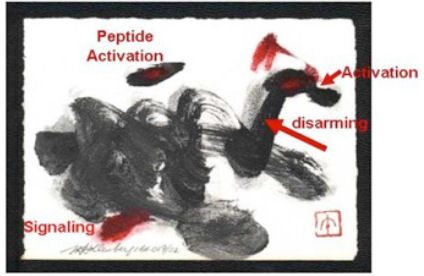Mentors and the butterfly effect: triggers for discovering signalling by proteinases via proteinase-activated receptors (PARs) and more.

Abstract
The essential role of proteinases as regulatory digestive enzymes, recognized since the late 1800s, has been underscored by the discovery that more than 2% of the genome codes for proteinases and their inhibitors. Further, by the early 1970s it was appreciated that in addition to their digestive actions, proteinases can affect cell function: (1) by the generation or degradation of peptide hormones and (2) by the direct regulation of signalling by receptors like the one for insulin. It was the discovery in the 1990s of the novel G-protein-coupled ‘proteinase-activated receptor’ (PAR) family that has caused a paradigm shift in the understanding of the way that proteinases can regulate cell signalling. This overview provides a perspective for the discovery of the PARs and my laboratory’s role in (1) understanding the molecular pharmacology of these fascinating receptors and (2) identifying the potential pathophysiological roles that the PAR family can play in inflammatory disease. In this context, the overview also portrays the essential impact that seemingly minor comments/insights provided by my lifelong mentors have had on kindling my intense interest in proteinase-mediated signalling. The ‘butterfly effect‘ of those comments has led to an unexpectedly large impact on my own research directions. Hopefully my own ‘butterfly comments’ will also be heard by my trainees and other colleagues with whom I am currently working and will promote future discoveries that will be directly relevant to the treatment of inflammatory disease.
